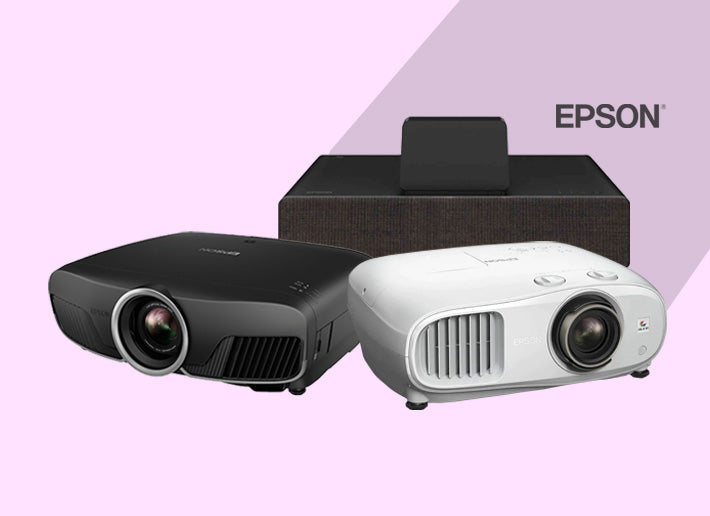We explore practical, expert-backed methods to assess and optimise a space’s acoustics for any purpose—from cinema-quality sound to crystal-clear speech
Sound reverberation plays a critical role in shaping the acoustic character of any space. Whether you're designing a home theater, tuning a recording studio, or improving speech clarity in a meeting room, controlling reverberation is essential. At its core, reverberation is the persistence of sound after the source has stopped, caused by reflections from walls, ceilings, floors and other surfaces.
While a little reverb can make a space feel warm and lively, too much of it can muddy audio, blur speech and create an unpleasant listening experience. Conversely, an over-treated room can sound sterile and unnatural. Striking the right balance is key. In this blog, we’ll explore how to calculate reverberation time (RT60), interpret its implications and implement corrective acoustic measures to optimise your space.
Fundamentals of Reverberation Time (RT60)
Reverberation Time (RT60) is defined as the time it takes for sound to decay by 60 decibels after the source has ceased. This parameter gives us a quantifiable sense of how "live" or "dead" a room sounds. The longer the RT60, the more reflective the room. The shorter the RT60, the more absorptive. The concept dates back to the work of Wallace Sabine, who first correlated room volume, surface materials and sound decay. His work laid the groundwork for modern architectural acoustics, allowing designers to predict and shape how sound behaves within enclosed spaces.
Different audio applications demand different RT60 targets. For example, a lecture hall requires clarity and low reverberation for speech, while a concert hall benefits from longer reverberation for musical richness. Rooms with too short an RT60 might sound acoustically dead, while excessively long reverberation can obscure nuances and reduce intelligibility.
Ideal RT60 Ranges by Room Type
| Room Type | Ideal RT60 (s) |
| Recording Studio | 0.3 – 0.5 |
| Home Theater | 0.3 – 0.6 |
| Classroom | 0.6 – 1.0 |
| Office | 0.4 – 0.8 |
| Concert Hall | 1.5 – 2.2 |
| Church | 2.0 – 3.5 |
(Source: Sabine, W. C. "Collected Papers on Acoustics", Harvard University Press)
Calculating RT60
Broadly, there are two ways RT60 is generally calculated.
A. Sabine Formula
The Sabine formula remains the foundational method to estimate RT60 where
RT60 = 0.161 × (V / A)
Here, V represents the room volume in cubic meters, while A denotes the total absorption in sabins. To apply this formula accurately, we calculate the volume by multiplying the length, width and height of the space. Next, we determine the absorption of each material by multiplying its surface area by its absorption coefficient—these coefficients describe how much sound energy a material absorbs.
| Material | Absorption Coefficient |
| Concrete wall | 0.02 |
| Carpet with underlay | 0.4 – 0.6 |
| Acoustic ceiling tile | 0.7 – 0.9 |
| Heavy curtains | 0.5 – 0.6 |
| Upholstered furniture | 0.4 – 0.5 |
The Sabine method works best in rooms with moderate absorption and evenly distributed surfaces. It is most accurate for mid-frequency content (500–2000 Hz). In rooms with highly absorptive or irregular surfaces, more sophisticated methods such as Eyring’s formula or statistical modelling may be more appropriate.
B. Digital Tools and Software
For those who seek greater precision or want to visualise acoustic performance across different frequencies, digital tools are invaluable. Room EQ Wizard (REW) uses impulse response testing to chart RT60 values across frequency bands, helping to pinpoint problem areas in bass or treble ranges. EASE allows acoustic consultants and architects to simulate how design changes affect acoustics in 3D environments.
Online RT60 calculators can assist in quick estimates, but they often lack the fidelity required for professional work. Nonetheless, they are a great starting point for understanding your space.
Identifying Excessive Reverberation
An accurate diagnosis is key to solving reverberation problems. Excessive RT60 manifests in various ways depending on the room’s function. In a classroom, it might mean students struggling to understand the teacher. In a home theater, audio may sound smeared or unintelligible during dialogue scenes. Musicians in a practice room might experience difficulty hearing their instruments clearly.
Simple tests can provide immediate insights. A clap test, performed in various locations around the room, can reveal flutter echoes or long decay times. Balloon pops or starter pistols offer a broadband impulse that mimics the sound decay pattern captured in professional tests. Smartphone apps like Decibel X or RT60 Analyzer use your device’s mic to approximate the decay curve.
When analysing a room’s acoustics, listen for clarity, balance and the speed at which sound energy dissipates. Spaces that sound hollow or overly live likely have high RT60 times that require correction.
Corrective Acoustic Treatments
Correcting reverberation issues typically involves a strategic combination of sound absorption, diffusion and architectural interventions. Absorptive materials work by converting sound energy into heat. Acoustic panels made from high-density fibreglass or mineral wool effectively address mid- and high-frequency reflections. These should be placed at first reflection points i.e. locations where sound from speakers or voices initially bounces toward listeners. Ceilings and opposing wall surfaces are prime targets.
For low-frequency control, bass traps are essential. These are placed in the corners of a room, where bass energy tends to accumulate due to boundary effects. Bass traps often contain denser materials and deeper cavities designed to absorb longer wavelengths.
To prevent over-damping, diffusion can be introduced. Diffusive surfaces scatter sound energy across a room, maintaining a sense of openness without creating harsh echoes. Commercial options include quadratic residue diffusers (QRD), skyline diffusers and polycylindrical diffusers. Even well-stocked bookshelves can serve as rudimentary diffusers when arranged irregularly.
Architectural details significantly influence reverberation. Domed or concave ceilings can create focal points for sound energy, leading to unpleasant hotspots. Meanwhile, angled or convex surfaces promote dispersion. Symmetry should also be avoided in untreated rooms, as parallel surfaces cause flutter echoes and standing waves.
Room Use-Specific Tips
Each type of room benefits from a tailored acoustic strategy.
We must target an RT60 between 0.3-0.5 seconds for home theaters. Too much reverb can cloud soundtracks, especially dialogue. Strategically placed absorptive panels should target side reflections and rear wall echoes, while ceiling treatment helps in vertical dispersion control. Add bass traps to prevent low-end resonance and consider diffusers at the rear wall to preserve spatial cues.
Conference rooms depend on crisp speech intelligibility. Here, an RT60 below 0.6 seconds is generally desirable. Acoustical ceiling tiles, wall-mounted panels and window treatments contribute significantly to reducing echo. In glass-walled boardrooms, freestanding or mobile absorptive panels can mitigate reflections without compromising design.
Recording studios follow a hybrid model known as the "live-end, dead-end" (LEDE) principle. The front of the room, near microphones or monitors, is heavily treated with absorptive materials, while the rear incorporates diffusion to maintain acoustic energy and create a natural-sounding space. This approach ensures accurate monitoring and balanced recordings.
In performance halls and churches, longer RT60 values enrich musical performances. However, clarity must not be sacrificed. Strategic placement of absorptive materials around the altar or stage helps retain articulation without compromising the musical ambience of the space.
Testing and Refining the Space
Acoustic treatment is an iterative process. After making modifications, it’s essential to conduct follow-up measurements to evaluate the effectiveness of your changes. Using REW or a calibrated test microphone and software helps perform frequency sweeps and impulse response analysis.
It’s also worth paying close attention to how the RT60 curve behaves across frequencies. A room that measures well at midrange but poorly at low or high frequencies might need more specialised treatment. Audio samples—spoken word, pink noise, or familiar music tracks—can provide subjective validation of improvements.
If a space sounds overly treated or "dead," consider removing or repositioning some panels to allow more natural reflections. Conversely, if issues persist, additional panels or diffusers may be needed.
Key Takeaways
Reverberation control is a cornerstone of acoustic design. Understanding RT60 and how it shapes sound in a space empowers you to create environments that are not only acoustically functional but also enjoyable to be in.
Beginning with accurate calculations or measurements of RT60, we must observe how the space performs and determine whether sound behaves in ways aligned with the room’s purpose. Applying absorptive and diffusive treatments thoughtfully while considering the architectural context transforms an unworkable space into a functional one. Finally, testing, refining and repeating until the space meets your desired acoustic signature is key to building a space that’s tailored to its intended use.
Great acoustics don’t happen by accident—they’re designed with intention and care.
Explore our premium range of home theater systems designed to deliver exceptional performance in any acoustic environment. Whether you're starting from scratch or refining an existing setup, our team of AV experts ensures your space sounds as stunning as it looks.









